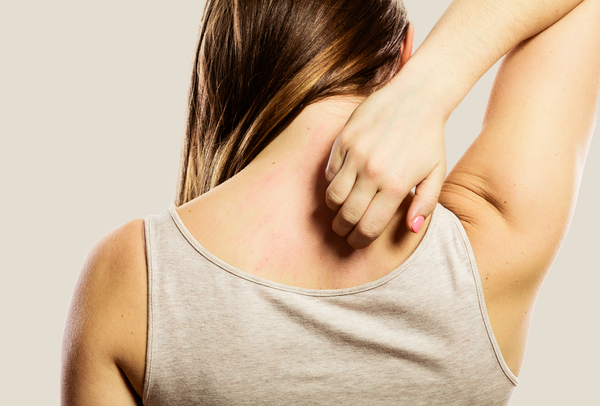Haircare products are designed to perform specific jobs, including cleansing, hydrating, smoothing, and protecting hair from damage. Yet despite these good intentions, some products use less-than-ideal ingredients to achieve these goals. In some cases, low ingredient cost drives formulation decisions. In others, the formulation itself may play a role since it can take more work chemistry-wise to integrate certain haircare ingredients.
Harvard-trained dermatologist Dr. Iris Rubin created SEEN so everyone can enjoy gorgeous hair and healthy skin without having to make compromises. Based on her personal and medical experience, she knows that not including certain haircare ingredients in SEEN is just as important as selecting the ones that do make it into our final formulations. Dr. Rubin carefully considers each ingredient’s effects on skin health, as well as potential effects on overall health—and these are the products that didn’t make the SEEN cut.
Sulfates
Sulfates are a type of surfactant, which are detergent-like ingredients found in beauty products that create suds and lather. Although they are generally considered safe, the growing wave of sulfate-free products is an indication that this ingredient is not without issues. The main concern with sulfates is that they can strip moisture from the scalp and skin, which can aggravate sensitive and acne-prone skin. In addition to being potentially harsh and dehydrating, sulfates can also cause color to fade.
The most common sulfate-based haircare ingredients are sodium lauryl sulfate and sodium laureth sulfate, but there are hundreds of synthetic and naturally-derived forms from sources like petroleum as well as coconut and palm oils. Regardless of their origin, sulfates are unlikely to do your skin or hair any favors. If you have reactive skin, it’s wise to skip the sulfates altogether—and you can rest assured that SEEN is free of sulfates.
Silicones
Silicone is an extremely common haircare ingredient that is widely used to reduce frizz. Although silicone is considered non-toxic, it is a highly processed synthetic compound that may involve the addition of fossil fuel-derived ingredients (which may be a concern for those who want to prefer “clean” products). When used as a haircare ingredient, silicone has a tendency to contribute to build-up, which can translate to extra weight on the hair.
In terms of skin health, silicones may have the potential to cause clogged pores when combined with certain other ingredients because they act as occlusives and can “trap” some ingredients on the skin. Build-up on the scalp may prevent hair follicles from performing at their best.
This is why SEEN uses hemisqualane (plant-derived C13-15 alkane) in place of silicone. Found in our Shampoo, Conditioners, and styling products, this plant sugar-derived alternative reduces frizz, provides color and heat protection, and keeps hair looking and feeling smooth.
Pore-clogging oils
Dr. Rubin got the idea to create SEEN after experiencing breakouts that she traced back to her haircare products. In fact, one of SEEN’s first published reports found that rinse-out and leave-in haircare products can leave a residue on the skin that lingers for hours.[1] When your haircare contains pore-clogging ingredients like certain oils, waxes, polymers, and other ingredients, this can contribute to acne. That's why all of SEEN's formulas are clinically proven to be non-comedogenic, which means they won't clog pores.
Parabens
Parabens are a family of chemicals that are commonly used as preservatives in cosmetic products to prevent the growth of harmful bacteria and mold. Parabens are often used in combination with other types of preservatives to better protect against a broad range of microorganisms. The most common parabens you’ll see on ingredient lists are methylparaben, propylparaben, butylparaben, and ethylparaben.[2]
In terms of the skin, parabens have a relatively low allergen rate. In fact, parabens were named the “Non-Allergen of the Year” by the American Contact Dermatitis Association in 2019. Because they pose very little risk of allergic skin reaction especially when compared to other preservatives.[3]
The concerns surrounding parabens have to do with their potential to mimic the effects of naturally-occurring estrogen hormones. Although the U.S. FDA still considers parabens to be safe, some studies have established links between parabens and breast cancer as well as fertility issues. To err on the side of caution, SEEN is free of paraben-based preservatives.
Phthalates
Phthalates are a group of chemicals that are used as plasticizers, and can be found in hundreds of products, including personal care products, fragrance, food packaging, household cleaners, and more. Although the risks to humans have yet to be fully defined, there is concern about negative health effects, such as endocrine disruption, decreased male fertility, and the possibility of increased cancer risk.
Much of our current information about the potential short- and long-term side effects about phthalates comes from animal-based studies, and the CDC wants more research to assess the impact on humans. Because of these possible health risks, you won’t find these ingredients in SEEN.
[1] Rubin IK, Gourion-Arsiquaud S. Deposition and Retention of Hair Care Product Residue Over Time on Specific Skin Areas. J Drugs Dermatol. 2020 Apr 1;19(4):419-423. PMID: 32272520.
[2] https://www.fda.gov/cosmetics/cosmetic-ingredients/parabens-cosmetics
[3] https://www.aad.org/dw/dw-insights-and-inquiries/2019-archive/september/parabens




